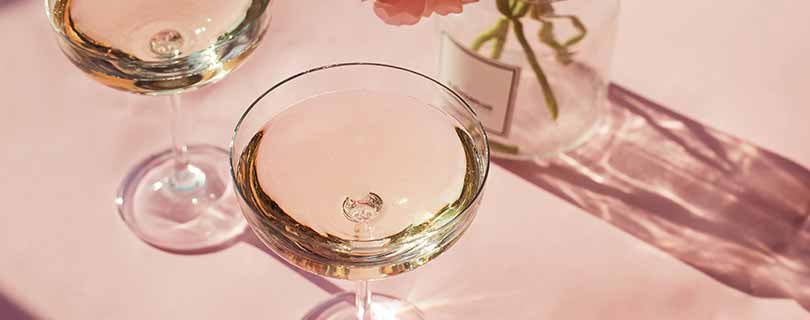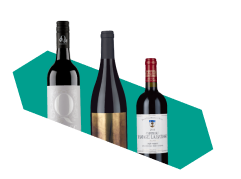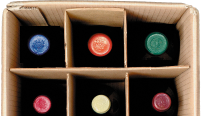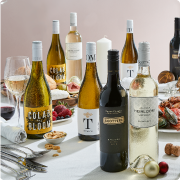Sparkling wine isn’t just for celebrations. It can help make a weeknight dinner feel special, add sparkle to your weekend lunch or turn lunch between friends into a moment to remember.
No matter your preference, there’s a sparkling wine to match your taste, with choices ranging from red to white and dry to sweet.
While France and Italy are known for luxurious Champagne and refreshing Prosecco, Australia has a thriving sparkling wine industry, with several regions producing high-quality styles.
Read on to learn more about Australian sparkling wine, from the regions that produce diverse and delicious styles to the best wine pairing tips for foodies.

Types of Australian sparkling wine
Australian winemakers follow in the footsteps of their French and Italian counterparts, creating sparkling wines in a similar style but with a distinctly Aussie twist.
In the same way as winemakers in the Champagne region of France, Australian wineries use the tried-and-tested combination of Chardonnay, Pinot Meunier and Pinot Noir grapes to create Champagne-style sparkling wines. Look for notes of crisp green apple and pear, citrus, brioche, almond and honey in home-grown blends.
Due to legal restrictions on using the label Champagne – which is reserved only for wines made in the region – Australian winemakers may occasionally use the name ‘Cuvée Brut’, meaning ‘dry blend’. This directly reflects the Australian style’s refreshing dryness.
Prosecco, the well-known Italian sparkler, is also made in Australia. The European Union has sought to restrict the use of the name globally, but thanks to historical precedents, Australian producers can currently label their wines as Prosecco.
Some of the best styles can be found in King Valley, where they are created using Glera grapes, the same variety primarily used to make Italian Prosecco. Australian Prosecco is a sparkling delight – light and frothy in texture, with crisp and refreshing acidity and notes of citrus, apple, acacia flowers, honeysuckle and almond. It is also available in demi-sec (slightly sweet) styles, ideal for special occasions and pairing with dessert.
You’re missing out if you haven’t tried an Australian sparkling red yet. Typically made using Shiraz grapes, sparkling Shiraz is a fabulous choice as a festive wine gift or a summertime treat. These wines are juicy and vibrant, with balanced acidity and bright notes of red berries and black stone fruits.
Some Australian wineries also produce sparkling rosé, typically from a blend of Pinot Noir and Chardonnay. These wines are crisp and refreshing, with fine, mousse-like bubbles and notes of strawberry, raspberry, citrus and white blossom.
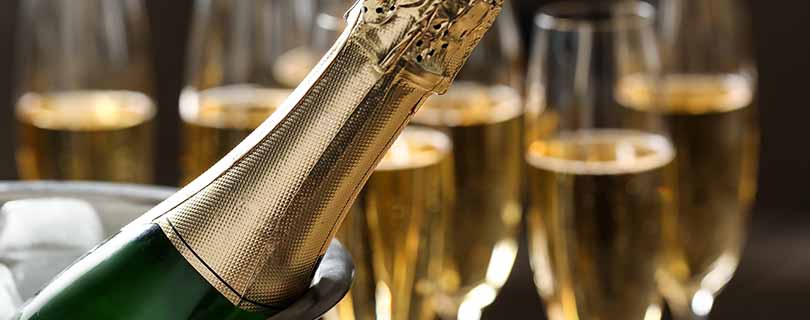
Which grapes are used to make Australian sparkling wine?
These are the main grape varieties used to make Australian sparkling wine:
Chardonnay – Known for its crisp acidity and citrus flavours, Chardonnay adds elegance and structure to Australian sparklers. It also contributes to the ageing potential of the wine.
Pinot Noir – This grape provides body, juicy fruit flavours and complexity. Its richness can help balance the acidity in the wine.
Pinot Meunier – Often used in smaller quantities, Pinot Meunier adds fruitiness and roundness to sparkling wine. It softens the structure provided by Chardonnay and Pinot Noir.
Glera – Used in Prosecco wines, Glera creates light, aromatic wines with fresh and fruity flavours. These typically feature notes of green apple, pear, citrus and floral undertones.
Shiraz – A uniquely Australian style of sparkling wine, Shiraz creates vibrant and robust sparkling reds. This grape variety features bold berry flavours, spice and subtle tannins.
How is sparkling wine made in Australia?
Sparkling wine production in Australia dates back to the early 1880s, with the first sparkling wine – a sparkling red – made in Victoria’s Great Western wine region.
Sparkling wine production closely resembles still wine, but it includes an additional secondary fermentation step. First, high-quality grapes are harvested early to maintain their acidity. The grapes are then pressed, and the juice undergoes a primary fermentation to become a base wine.
For traditional method sparkling wines, the base wine is bottled with sugar and yeast. This starts a second bottle ferment, producing carbon dioxide and creating the wine’s characteristic bubbles. The wine is then aged on its lees (the residual yeast that remains after fermentation) to develop more complex flavours. After ageing, the lees is removed, and the wine is sealed.
Some Aussie sparkling wines are made using the tank or Charmant method, which involves a second fermentation in large tanks.
Discover our range of sparkling wines.
Key Australian sparkling wine regions
Australia is home to several wine regions famous for their exceptional sparkling wines.
Adelaide Hills (South Australia)
Adelaide Hills is known for its high altitude and cooler temperatures, which help contribute to the production of premium sparkling wines. The region’s winemakers use Chardonnay and Pinot Noir to create sparkling wines with crisp acidity, fresh citrus fruit flavours, and delicate, mousse-like bubbles.
Explore our collection of wine from Adelaide Hills.
King Valley (Victoria)
Although one of the less well-known wine regions, King Valley is gaining well-deserved recognition for its innovative approach to sparkling wine. The region’s high altitude and cool climate are ideal for producing vibrant, aromatic sparklers. King Valley is also known for its Aussie take on Prosecco.
Mornington Peninsula (Victoria)
Mornington Peninsula has a maritime climate with consistently cool temperatures – perfect for sparkling wine production. The region specialises in Pinot Noir and Chardonnay, creating elegant wines with refined acidity and complex flavours.
Tasmania
Tasmania is considered Australia’s premier region for sparkling wine. Its cool climate and long growing season are ideal for growing high-quality Chardonnay and Pinot Noir grapes. Tasmanian wines are known for their vibrant acidity, fine bubbles and complex layers of flavours, making them comparable to some of the best sparkling wines in the world.
Yarra Valley (Victoria)
Yarra Valley is one of Australia’s oldest wine regions, with a cool to moderate climate perfect for sparkling wine production. Chardonnay, Pinot Noir and Pinot Meunier vines thrive here and create elegant, refined sparkling wines with a delicious balance of fruitiness and acidity. Yarra Valley’s diverse geography adds to the wines’ complexity, making it a standout region. The prestigious Moët & Chandon Champagne house set up base here in 1986 through its subsidiary Domaine Chandon.
What foods pair well with Australian sparkling wine?
White Australian sparkling wine features bright acidity, fine bubbles and a refreshing character, so it’s a delicious partner to a wide range of dishes. For light bites, try a glass with fresh sushi, salads with a vinaigrette dressing or soft cheeses – the wine’s citrus notes complement the freshness of these foods, while its acidity cuts through any richness.
A glass of white sparkling wine also pairs perfectly with roast chicken, fresh oysters and prawns and creamy pasta dishes. Try your favourite sparkler with fried chicken, as the wine’s acidity cuts through the fattiness of the dish while the bubbles complement the crunch.
A sparkling Shiraz is a treat to serve at any time of year, particularly at Christmas. Its red fruitiness and bright acidity complement the richness of glazed Christmas ham, dark turkey meat or roast duck. You could also pair it with a decadent chocolate dessert, chargrilled lamb or charcuterie boards featuring salty, smoked meats.
Australian sparkling rosé is very versatile and can be paired with a wide variety of foods – fresh seafood, grilled chicken, citrusy salads, spicy or sweet-sour Asian dishes and tomato-based pizzas.
Discover more food and wine pairings.
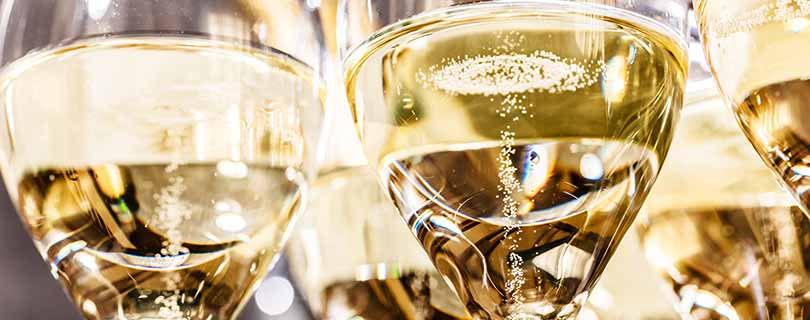
How best to serve Australian sparkling wine
Want to enjoy your sparkling wine at its best? Aim for a serving temperature of 6-8°C. Chill the bottle in the fridge for about three hours or in an ice bucket with water and ice for 30 minutes before serving. Use flute or tulip glasses to concentrate the aromas and keep the bubbles lively – remember to pour slowly to preserve your sparkling wine’s bubbles.
When unopened, store bottles of sparkling wine in a cool, dark place, ideally at a consistent temperature of 10-12°C – a wine fridge or basement would work perfectly. Once opened, a sparkling wine stopper can help maintain the bubbles for 2-3 days in the fridge.
